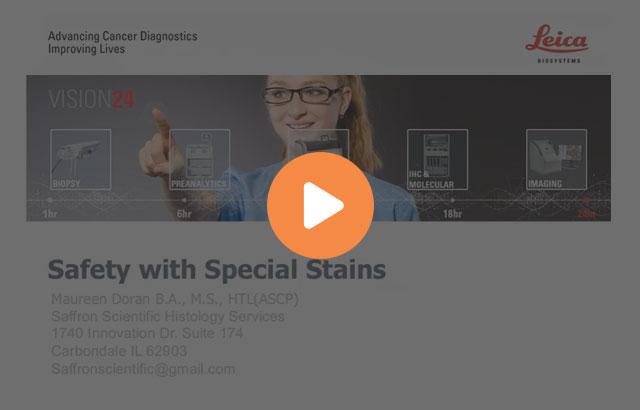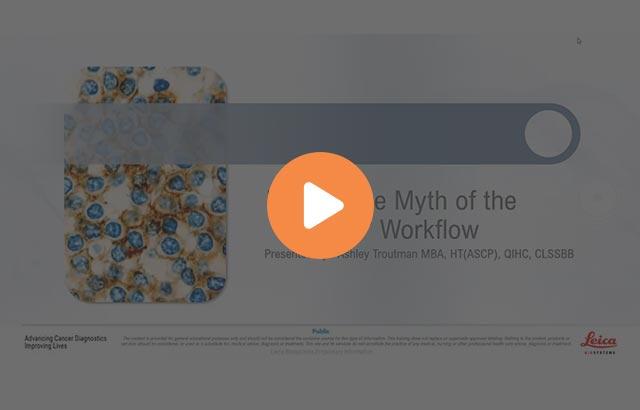
Elements of Laboratory Safety

The responsibility of the clinical laboratory is to provide quality patient diagnostics. However, the environment in which this work occurs contains health and safety risks where workers must remain vigilant. The Centers for Disease Control and Prevention (CDC) explains that laboratory safety and the reduction of exposure to hazardous materials are essential for the staff’s health and well-being. Practicing laboratory safety also prevents dangerous exposure to the community and the public.1
Risk assessments determine the laboratory’s biosafety level, from which safety policies and procedures are developed and enforced by the laboratory supervisor or safety officer. This article will review the following:
- Laboratory safety manual
- Personal protective equipment
- Employee health and immunizations
- Management of sharps and broken glass
- Lab equipment and facility safety
- Chemicals and other hazard potentials
- Safety training
- Hazard signs utilized in the laboratory
Safety Manual
A safety manual contains all the policies specific to the laboratory to address the following:
- Lab Personnel Responsibilities in Safety- Commitment to Safety, Health, and Environmental Protection
- Safety Orientation and Competency
- Access and Communication of Safety Policies, Practices, and Concerns
- Personal Protective Equipment
- Biosafety and containment procedures, including a chemical hygiene plan
- Decontamination methods
- Bloodborne pathogen exposure
- Emergency Operations Disaster Plan including methods for handling emergencies and emergency numbers
- Waste Management
- Hazardous Waste Disposal
- Medical Device Reporting
- Biological Safety Cabinets
- Bloodborne Pathogens Exposure Control Plan
- Chemical Exposure Monitoring
- Communication of Hazardous Chemicals in the Laboratory
- Designation of Clean Areas in the Laboratory
- Electrical Safety
- Excessive Noise Levels
- Laboratory Ergonomics
- Labeling of Laboratory Reagents
- Fire Safety
- Latex Management Program
- Safety Inspections
- Accidents Within the Laboratory
- Tuberculosis Exposure Control
The laboratory safety officer should review local, state, and federal laboratory safety laws and standards to ensure compliance.2
Personal Protective Equipment (PPE)
Personal protective equipment is gear that is worn to prevent exposure to hazardous materials. Clinical laboratories should choose the PPE appropriate for the safety of personnel for the work being performed. General PPE includes a closed laboratory coat or gown, eye protection, closed-toe shoes, and gloves. In some situations, boots, hearing protection, and respirators may be appropriate.
The International Organization for Standardization (ISO) is an organization that brings together experts from 165 countries to share knowledge and develop voluntary, consensus-based, market-relevant International Standards.3 Below are some common PPE ISO signs you
might see in the laboratory:







Employee Health and Immunizations
Good handwashing in the laboratory should not be underestimated. Personnel should wash their hands while working in the laboratory with hazardous materials and after removing PPE. They should also wash their hands before leaving the laboratory. Good handwashing technique using soap and water:
- Wet your hands first with water
- Apply soap and rub your hands together vigorously for at least 15 -20 seconds, covering all hands and fingers’ surfaces.
- Rinse your hands with water and use disposable towels to dry
- Use a towel to turn off the faucet 4

Wash Your Hands
Consumption and storage of food or drink within the laboratory are prohibited. Personnel should avoid touching their face, including eyes, nose, and mouth.

No Food Or Drink
Immunizations should be up-to-date, including Hepatitis B, Influenza, MMR (Measles, Mumps, and Rubella), Varicella (Chickenpox), D tap (Diphtheria, Tetanus, and Pertussis), and Meningococcal vaccines as recommended by the Centers for Disease Control and Prevention.5
Management of Sharps
Safety policies and procedures for managing sharps, including needles, scalpels, pipettes, and broken glassware, should be developed and incorporated into personnel training. Sharp containers are labeled and not filled to greater than 2/3’s full. The recapping of needles by hand should be prohibited, and a hands-free device used such as a needle remover on some sharps’ container or forceps.

Sharps Disposal
A policy for hands-free management of broken glassware should also be instituted. Lab personnel should handle broken glass using tongs, forceps, broom, and dustpan.

Lab Equipment and Facility Safety
The universal biohazard sign is posted at the entrance to the laboratory. Other information posted with the universal biohazard sign at the lab entrance and following the laboratory’s institutional policies includes:
- Laboratory Biosafety Level
- Supervisor’s or other responsible personnel’s name and telephone number
- PPE requirements
- General, occupational health requirements (e.g., immunizations, respiratory protection)
- Procedures for entering and exiting the laboratory 6
The biohazard sign is also posted on waste receptacles to prevent exposure to organisms.

Biohazard
General Warning Sign
The general warning sign is placed on equipment, cabinets, and certain laboratory areas to remind personnel to follow precautions.

General Warning Sign
Chemicals and Other Hazard Potentials
Chemicals in the laboratory are separated according to their hazard class and stored in appropriate cabinetry. Chemical containers are labeled showing contents, date opened, and expiration date. A current Safety Data Sheet (SDS) (formerly known as Material Safety Data Sheets or MSDS), supplied by the manufacturer, distributor, or importer, should be available for chemicals in use. Hazardous chemicals should be listed and assessed for carcinogenic potential, reproductive toxicity, and acute toxicity.7
The Occupational Health and Safety Administration (OSHA) has developed the Hazard Communication Standard to ensure workers receive information on the identities and hazards of the chemicals in the workplace. Employers must provide safety data sheets, hazard classification, chemical labels, and training in the event of exposure. OSHA has aligned with the Globally Harmonized System of Classification and Labeling of Chemicals for a common approach to identifying these hazardous materials.8
Flammable Material
Flammable chemicals in the lab include acetone, ethanol, and isopropanol. Lab personnel should wear protective clothing, gloves, eye and face protection when using combustible materials.9

Flammables
Oxidizing Substance
Oxidizing substances are combustible and, when mixed with other materials, may be explosive. When using an oxidizing substance in the laboratory, personnel should wear protective clothing, gloves, eye and face wear. The use of strong oxidizers may require work under a hood. Personnel working with oxidizing substances should also be aware of the nearest fire extinguisher, eyewash station, and safety shower. Examples of oxidizing substances used in the laboratory include Ammonium perchlorate, Bromine, Chromic acid, Dibenzoyl peroxide, Hydrogen peroxide, Perchloric acid, Sodium perchlorate.

Oxidizers
Corrosive Substance
Corrosive materials are caustic to tissue and damaging when coming in contact with the skin, GI tract, eyes, and respiratory tract - if inhaled. When working with corrosive substances, proper PPE includes at least protective clothing and eye protection. If handling large quantities of corrosive materials, PPE should include protective clothing, gloves, eye protection, and respiratory protection. Examples of corrosive materials include Glycolic acid, Imidazole, 4-Methoxybenzylamine, Sodium hydroxide, Amines, Sulfuric acid, Bromine Hydrogen peroxide. Corrosive gases include Ammonia, Hydrogen chloride, Nitrogen dioxide, and Sulfur dioxide. When working with corrosive gases, personnel should wear respiratory protection or work under a chemical fume hood.

Corrosives
Toxic Material
Toxic materials are poisonous when coming in contact with human tissue. Wear protective clothing, eye, and respiratory protection when dealing with toxic materials. Some common toxic chemicals found in the laboratory include methanol and xylene.

Acute Toxicity
Explosive Materials
Unfortunately, explosions can occur in the laboratory. Special precautions, training, appropriate procedures, and attention to detail are necessary to limit the risk of explosion. Work with explosive (or potentially explosive) materials generally requires protective apparel such as face shields, gloves, laboratory coats, and protective devices such as explosion shields, barriers, or even enclosed barricades or an isolated room.10 Some examples of potentially explosive materials are dry ice and peroxides.

Explosives
Radioactive Material
When there is a chance of exposure to radioactive materials, signage delineates the potential exposure area. The Nuclear Regulatory Commission requires a manual for the safe handling of radiation materials. Special training on handling, decontamination, and the management of waste is essential. The chance of exposure decreases with protective equipment, including a lab coat, gloves, and face protection.

Radioactive Material or Ionizing Radiation
Non-Ionizing Radiation
Microwaves, ultraviolet equipment, and lasers are examples of non-ionizing radiation. Too much exposure is damaging to tissue. When working with ultraviolet equipment, personnel should wear appropriate safety glasses, face shields or goggles.

Non-Ionizing Radiation
Electricity Hazard
Equipment, instruments, and appliances abound in the laboratory setting. Each device should be grounded and checked for current leakage after replacement, repair, and when troubleshooting. All equipment should have a date of inspection and for reinspection. A label should appear on high voltage equipment and the power source identified. If any equipment begins smoking or shooting sparks, turn off the power and unplug. If it is unsafe to do so, cut the equipment’s circuit by throwing the breaker switch.

Electricity Hazard
Other hazard signs that might be posted throughout the lab include:
Low-Temperature Hazard
A low-temperature hazard sign is placed on the laboratory’s freezer to let personnel know that special gloves explicitly made for handling materials from the freezer are needed.

Low Temperature Hazard
Hot Surface
Warning signs of hot surfaces on equipment let personnel know the potential for a burn when the area is touched.

Hot Surface
Health Hazard
Health Hazards exist as carcinogens, respiratory, reproductive, mutagenicity, target organ, and aspiration toxins in the laboratory. Training and knowledge of the chemical's personnel work with each day and the protective equipment necessary when working with those chemicals will limit toxic exposure.

Health Hazard
Irritant
Exposure to an irritant by contact with tissue (skin or eye) is reversible. Examples of irritants include acetone, formaldehyde, and iodine.11

Irritant
Environmental Hazard
A well-thought-out waste management system in the laboratory will help protect the environment and personnel working in the laboratory. Separate waste by type and label waste containers with a hazardous waste sign with the product’s amount and name. Recycle in the laboratory and avoid the use of toxic agents when possible.

Environmental Toxicity
Safety Training
Lab personnel training will include the hazardous chemicals used in their work area. They should also be aware of the following:
- Location of the Occupational Safety Health Administration’s (OSHA) Occupational exposure standard
- Location of the chemical hygiene plan
- Area of the safety data sheets
- Exposure limits
- Signs and symptoms of exposure
- Methods to detect hazardous chemical discharged 12
Lab personnel safety training will include measures to take when exposed to hazardous materials, such as the location and use of eyewash stations, safety showers, and first aid stations.



During an emergency, the employee is aware of handling emergencies and what numbers to call in a crisis. All employees should be trained on fire safety and the location and use of fire safety equipment. Portable fire extinguishers are classified to indicate their ability to handle specific classes and sizes of fires. Labels on extinguishers indicate the class and relative size of fire that they can manage. Fire extinguishers must be accessible, fully charged, and in proper working order. 13




If there is an emergency, there should be an assigned emergency meeting point. Employees should also be trained on the location and use of an automated heart external defibrillator.



The health and well-being of lab personnel, the community, and the public should be priorities in the laboratory. Safety in the laboratory is everyone’s responsibility, and with the appropriate safety precautions, training, and signage, the laboratory can remain a safe place to work.
About the presenter

Rhondalyn Bomkamp, is an accomplished Director/Nurse Leader with a proven track record of effectively managing complex projects and health system performance improvement initiatives. As a registered nurse, she has experience in Quality and Patient Safety and Project Management/Development in the oncology, cardiac and intensive care arenas. She has strong clinical knowledge and management experience with the ability to recognize opportunities for improvement, coordinate the work of many areas and develop collaborative relationships with diverse groups to facilitate the implementation of change.
Referencias
- Lab Safety Portal | CDC. www.cdc.gov. Published November 17, 2020. Accessed March 30, 2021. https://www.cdc.gov/labsafety/index.html#:~:text=Laboratorysafetysustainsthewellness
- Laboratory NRC (US) C on PP in the Safety Laws and Standards Pertinent to Laboratory. National Academies Press (US); 2011. https://www.ncbi.nlm.nih.gov/books/NBK55862/
- Category: ISO 7010 mandatory action signs - Wikimedia Commons. commons.wikimedia.org. Accessed March 30, 2021. https://commons.wikimedia.org/wiki/ Category:ISO_7010_mandatory_action_signs
- Healthcare Providers. Centers for Disease Control and Prevention. Published 2019. https://www.cdc.gov/handhygiene/providers/index.html
- Recommended Vaccines for Healthcare Workers. Published 2019. https://www.cdc.gov/vaccines/adults/rec-vac/hcw.html
- Biosafety in Microbiological and Biomedical Laboratories (BMBL) 5th Edition. Published 2019. https://www.cdc.gov/labs/BMBL.html
- Search. College of American Pathologists. Accessed March 30, 2021. https://www.cap.org/search?q=Laboratory%20Safety
- Hazard Communication - Overview Occupational Safety and Health Administration. www.osha.gov. https://www.osha.gov/hazcom
- Hazard Communication – Hazard Communication Pictograms | Occupational Safety and Health Administration. www.osha.gov. Accessed March 30, 2021.https://www.osha.gov/hazcom/pictograms
- Working with Chemicals. NIH.gov. Published 2011. https://www.ncbi.nlm.nih.gov/books/NBK55872/
- Working with Chemicals. NIH.gov. Published 2011. https://www.ncbi.nlm.nih.gov/books/NBK55872/
- Laboratories - Overview | Occupational Safety and Health Administration. www.osha.gov. https://www.osha.gov/laboratories.
- Emergency Standards | Portable Fire Extinguishers - Extinguisher Placement and Spacing | Occupational Safety and Health Administration. www.osha.gov. https://www.osha.gov/SLTC/etools/evacuation/portable_placement.html
Related Content
El contenido de Leica Biosystems Knowledge Pathway está sujeto a las condiciones de uso del sitio web de Leica Biosystems, disponibles en: Aviso legal.. El contenido, incluidos los webinars o seminarios web, los recursos de formación y los materiales relacionados, está destinado a proporcionar información general sobre temas concretos de interés para los profesionales de la salud y no está destinado a ser, ni debe interpretarse como asesoramiento médico, normativo o jurídico. Los puntos de vista y opiniones expresados en cualquier contenido de terceros reflejan los puntos de vista y opiniones personales de los ponentes/autores y no representan ni reflejan necesariamente los puntos de vista ni opiniones de Leica Biosystems, sus empleados o sus agentes. Cualquier enlace incluido en el contenido que proporcione acceso a recursos o contenido de terceros se proporciona únicamente por comodidad.
Para el uso de cualquier producto, debe consultarse la documentación correspondiente del producto, incluidas las guías de información, los prospectos y los manuales de funcionamiento.
Copyright © 2025 Leica Biosystems division of Leica Microsystems, Inc. and its Leica Biosystems affiliates. All rights reserved. LEICA and the Leica Logo are registered trademarks of Leica Microsystems IR GmbH.



